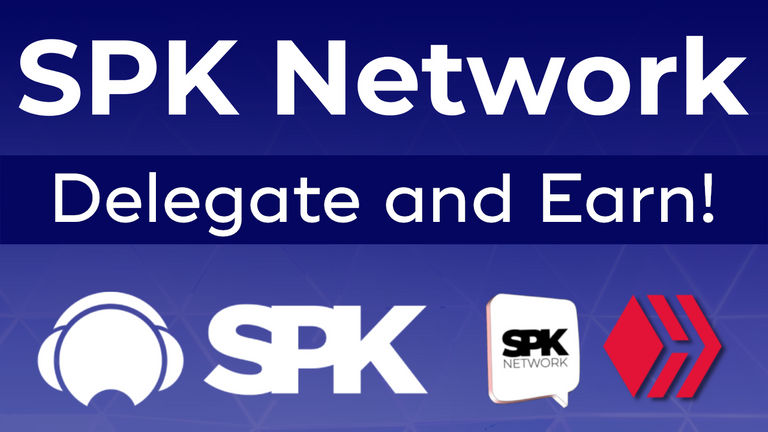
As you probably know, the long-awaited SPK Network has left testnet mode and is officially active since Monday, August 8 at 7pm Pacific Time (Tuesday, August 9, 2:00 UTC).
As I am a fervent supporter of the project, I of course added my stone to the building by running a node to support the SPK network as @arcange.spk.
Being a node operator
My node has been running smoothly since the launch.
Of course, there were some hiccups, as is often the case when putting a project of this magnitude, into production but these were quickly resolved thanks to the hard work of @disregardfiat and a few node updates deployed promptly.
For those who want to use it, I also provide an SPK Network API at https://spkcc.arcange.eu
That's it for the technical part. I will now try, as usual, to share with you in a layman's way my experience on this subject and explain to you why it should be of interest to you.
What is the SPK network
The SPK network is a project that was initiated a long time ago by @starkerz and @theycallmedan. Their vision is to provide the necessary components for the creation of a completely decentralized platform to host and distribute it, starting with videos but, why not, other data as well.
The goal is for this new Web 3.0 platform to rely on the Hive blockchain to secure its transactions, but for its storage and management data to be outside the Hive blockchain and to be also fully decentralized.
The SPK network is therefore managed in a separate blockchain (sidechain) with its own rules.
Mining and Governance
As every time we talk about blockchain, it is inevitable to talk about Mining (also known as Block Production) and Governance. Let's see how it goes on the SPK network.
1. Mining = LARYNX (token)
Anyone who had a Hive account before January 6 of this year has probably already heard of the LARYNX token. Indeed, since that date, an airdrop has been in progress and it is possible each month to claim LARYNX tokens depending on how much Hive Power (HP) you had in your account at that time.
Note: for those who did not benefit from the airdrop, it is possible to buy LARYNX on the de dlux decentralized exchange (DEX).
But what are the LARYNX used for?
Once you have LARYNX, you have two options:
Become a node operator (aka miner)
If you have some technical skills, you can set up a server, install the necessary software on it and start mining. You will also need to lock your LARYNX. You will then be rewarded with other tokens: SPKs (more about them below)Delegate to a node operator
If you do not want to burden yourself with the management and maintenance of a server and its software, you can still withdraw income from your LARYNX by delegating them to one or more miners of your choice. Of course, the more reliable your delegates, the higher your remuneration will be.
When you delegate your LARYNX, both the delegator and the delegatee receive a reward with SPK tokens. It is a win-win operation.
The 4 states of LARYNX
- liquid
That is the state they have when you receive them from the airdrop or buy them on the DEX.
Only when they are liquid can you transfer, sell, lock or power them up. - locked
That is a required step to be part of the sidechain consensus. The more you lock, the higher the chance to be among the top 20 block producers and get higher rewards. - powered
When you power up your LARYNX, you will start earning SPK Tokens at a (current) rate of 0.010%. - delegated
Delegating is a "kind of" voting for witnesses on Hive, except that it has no effect on governance. You just tell the SPK Network who you consider a reliable node operator.
When you delegate your powered-up LARYNX to a node operator, both will start earning SPK Tokens at a (current) rate of 0.015%.
2. Governance = SPK (token)
Currently, SPK tokens are not yet usable, which does not prevent you from wanting to accumulate them.
Indeed, the SPK Network continues its development and, when released, the governance-related role of SPK will then come into play. It is therefore in your best interest to obtain as many as possible if you wish to have your say later about the SPK network and its orientations.
Should I lock, power up or delegate?
One question I had in mind before the launch was "how do I best use/invest my LARYNX tokens?" For example, as a node operator, is it better to lock all my LARYNX tokens or keep a few of them liquid? Does it change something?
If you are a node operator, locking your LARYNX will allow you to get SPK tokens at the (current) rate of 0.1%. That's the best option for you if you want to maximize the number of your SPK tokens.
What is certain is that if you do NOT operate a node, it is useless to lock your LARYNX! You won't get any benefit from doing that. Keeping them liquid won't help either. The best thing for you to do is to power up and then delegate them to one or more node operators.
QUICK PROMO:
I'm a node operator! Check your wallet and delegate your LARYNX to @arcange.spk =)
Another option would be to find the mix that best suits you. You could, for example, lock part of your LARYNX (if you are a node operator), Power-up another part and delegate it to someone else to support it (and thus promote the replication of SPKs), and keep however a liquid part for other options to come which could provide a better return (me teasing)
As you can see, the good thing about the SPK network project is that you remain in control. This is true Web 3.0 spirit!











.gif)


